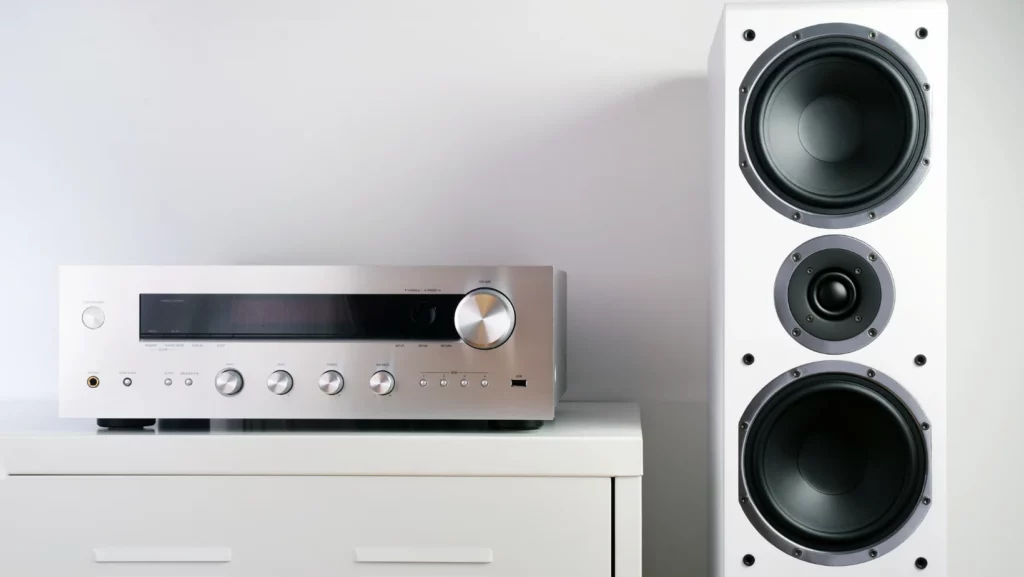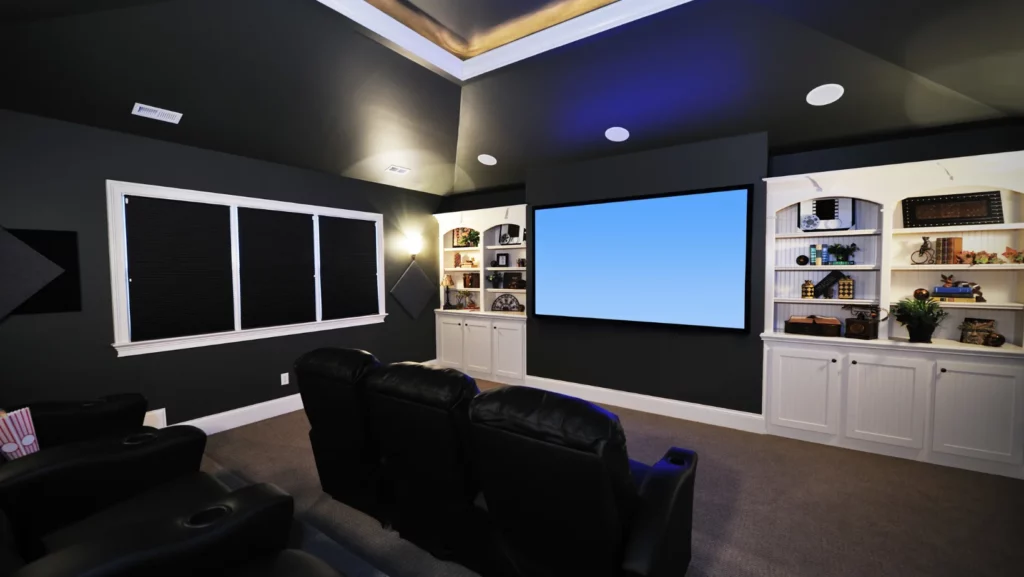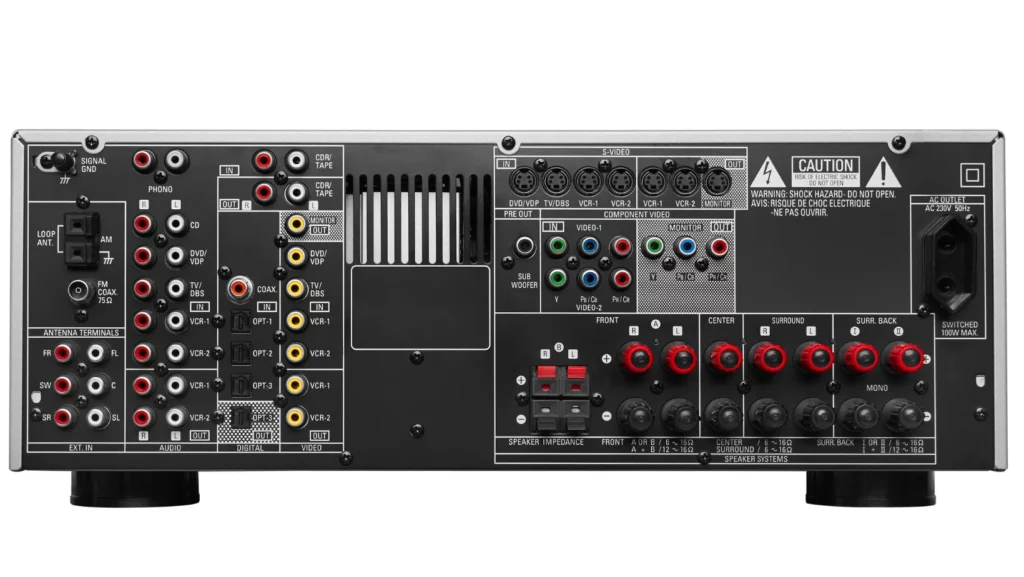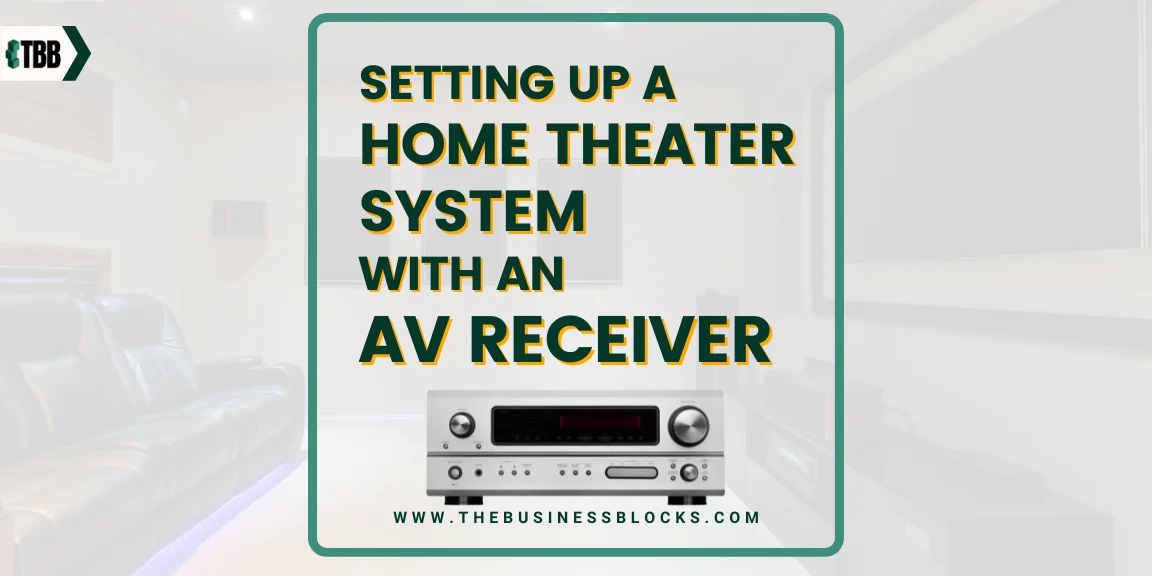Creating a home theater system is like embarking on an exciting journey into the world of cinematic entertainment, right in the comfort of your own living room. At the heart of any outstanding home theater setup stands the AV receiver, a powerful and versatile component that brings together audio and video elements to deliver an immersive viewing and listening experience. In this guide, we will delve into the art of setting up a home theater system with an AV receiver, unlocking the potential to enjoy movies, music, and gaming like never before.
Whether you’re a seasoned audio-visual enthusiast or a newcomer to the world of home entertainment, this step-by-step journey will help you navigate the complexities of AV receivers, speakers, displays, and more. Get ready to transform your living space into a personal cinema, where every frame and every note comes to life, elevating your entertainment to a whole new level.
Are you ready to embark on an exciting journey into the world of home theater systems?
Imagine the thrill of experiencing movies, music, and games in stunning detail, with crystal-clear sound that immerses you completely. With the right guidance, you can achieve all this and more, and it’s easier than you might think. Whether you’re a seasoned AV expert or just beginning to explore the possibilities, we’re here to help you every step of the way.
Unlocking the full potential of your home entertainment setup starts with understanding the role of an AV receiver. So, if you’re ready to turn your living room into the ultimate entertainment hub, where family and friends gather to be wowed by immersive visuals and breathtaking sound, then join us on this adventure.
Let’s make your home theater dreams a reality – read on and discover the magic of setting up a home theater system with an AV receiver!
Did you know?
- The global AV Receiver market size was valued at USD 2523.7 million in 2022 and is expected to expand at a CAGR of 3.26% during the forecast period, reaching USD 3059.8 million by 2028.
- In 2016, there was a negative annual growth rate of about 18.8 percent for home theater systems shipped within Japan.
Introduction to AV Receivers

An AV receiver – also known as an audio/video receiver or home theater receiver – is a central component that acts as the brain of your home entertainment system. It receives audio and video signals from various sources, such as Blu-ray players, gaming consoles, cable boxes, and streaming devices, and then processes and amplifies them to deliver high-quality sound through connected speakers and a video signal to your display.
In addition, an AV receiver can also serve as a hub for connecting multiple devices and sources, making it easier to switch between them without having to constantly change cables. This eliminates clutter and simplifies the setup process, allowing you to focus on enjoying your favorite content.
Key features and functions
AV receivers come equipped with a wide range of features and functions designed to enhance your entertainment experience. Some of the key features include:
Audio/video processing
An AV receiver decodes various audio formats, such as Dolby Digital and DTS, to deliver surround sound through connected speakers. It can also process video signals, converting them to the appropriate format for your display.
Amplification
With built-in amplifiers, an AV receiver boosts the power of audio signals to drive speakers and deliver clear sound at the desired volume.
Connectivity
Most AV receivers come with multiple inputs and outputs, including HDMI, optical, and RCA ports, allowing you to connect a variety of devices and sources. Some even offer wireless connectivity options, such as Wi-Fi and Bluetooth.
Room calibration
Many AV receivers come with advanced room calibration features that use a microphone to analyze your space and adjust audio settings accordingly, ensuring optimal sound quality.
Multi-room support
You can set up some AV receivers to send audio and video signals to different zones or rooms in your home, allowing you to enjoy the same content in multiple locations.
Types of AV Receivers
AV receivers come in various shapes and sizes, with different features and capabilities to suit different needs.
Some of the most common types include:
5.1 channel receiver
This type of receiver can power five speakers (left, center, right, surround left, surround right) and a subwoofer for a standard 5.1 surround sound setup.
7.1 channel receiver
Similar to the 5.1 channel receiver, this type can power seven speakers and a subwoofer, adding two additional surround speakers for a more immersive 7.1 surround sound experience.
9.2/11.2 channel receiver
These high-end receivers have the ability to support up to nine or eleven speakers and two subwoofers, allowing for a more advanced surround sound setup.
Soundbar receiver
This type of receiver is specifically designed to work with a soundbar, which combines multiple speakers into one sleek bar-shaped unit. It can also connect and power additional wireless rear speakers for a more immersive experience.
Depending on the brand and model, an AV receiver may also have additional features such as built-in streaming services, voice control, and app compatibility. It’s important to research and compare different options to find the best fit for your specific needs and budget.
Audio Processing Technology in AV Receivers
One of the key components that sets AV receivers apart is their audio processing technology. This refers to the way an AV receiver decodes and amplifies audio signals to create a more immersive sound experience.
Some of the most common technologies used in AV receivers include:
Dolby Atmos
Introduced in 2012, Dolby Atmos is an advanced audio format that creates a three-dimensional sound experience by adding overhead speakers to a traditional surround sound setup. This allows for more precise placement of sound and creates a more realistic and immersive listening experience.
DTS:X
Similar to Dolby Atmos, DTS:X is another format that offers object-based audio, allowing for more precise placement of sounds in a 3D space. It also supports multiple speaker configurations, making it a versatile choice for different setups.
THX
Created by THX Ltd., this technology is designed to provide high-quality audio and video performance in home theater systems. It focuses on ensuring accurate sound reproduction and consistent levels of sound quality across different content sources.
AV Receiver: Why do you need one?

Now that we’ve covered the basics of AV receivers, you may be wondering why you actually need one for your home entertainment setup. Here are a few reasons why investing in an AV receiver can greatly enhance your viewing and listening experience:
Better audio and video quality
An AV receiver is designed to process audio and video signals from different sources, ensuring that they are delivered in the best possible quality. This means you can enjoy your favorite movies, music, and games with enhanced sound and pictures.
Simplified setup process
As mentioned earlier, an AV receiver acts as a central hub for connecting multiple devices and sources. This eliminates the need for constantly changing cables or remotes, making it easier to switch between different content sources.
Future-proofing your entertainment system
With new audio and video technologies being developed all the time, investing in an AV receiver ensures that your home entertainment system is equipped to handle future upgrades and advancements.
Customizable sound experience
An AV receiver allows you to adjust various audio settings, such as speaker levels and equalization, to suit your personal preferences. This means you can create a custom sound experience that best suits your listening environment and tastes.
With its range of features and capabilities, it can greatly enhance your overall viewing and listening experience. So if you want to take your movie nights or music sessions to the next level, consider investing in an AV receiver.
Guide for Setting up Your AV Receiver
Now that you have an understanding of what an AV receiver can do, let’s dive into setting up your home theater system.
Here are the basic steps to get you started:
- Choose your speakers: The first step is to choose the right speakers for your setup. This will depend on the size of your room and personal preferences. You can opt for a traditional surround sound setup with multiple speakers, or go for a soundbar with additional wireless rear speakers.
- Connect your sources: Next, connect all your audio and video sources to the AV receiver using HDMI, optical, or RCA cables. This includes devices like your TV, Blu-ray player, game console, and streaming devices.
- Connect your speakers: Connect your chosen speakers to the AV receiver using a speaker wire. Make sure to follow the correct polarity for each speaker (positive to positive, negative to negative).
- Set up the audio processing technology: If your AV receiver has advanced audio processing technologies like Dolby Atmos or DTS:X, make sure to configure them correctly. This may involve adjusting speaker levels and settings in the receiver’s menu.
- Calibrate your sound system: Most AV receivers have a built-in calibration tool that can help optimize your sound system based on the acoustics of your room. Follow the instructions provided to ensure you get the best sound possible.
- Test your system: Once everything is set up, it’s a good idea to test your system. Play different types of content and make any necessary adjustments to achieve the desired sound.
- Enjoy your home cinema experience: You’re now ready to sit back and enjoy your favorite movies, music, and games with enhanced audio quality!
As you can see, setting up an AV receiver may seem daunting at first, but with the right knowledge and steps, it can greatly enhance your home entertainment experience.
Tips for Choosing the Right AV Receiver

If you are in the market for an AV receiver, here are some tips and factors to consider to help you make the right choice:
- Power and channels: Look for an AV receiver with enough power to drive your speakers. The number of channels also matters, as this determines the number of audio sources that can be connected and played simultaneously.
- Compatibility: Make sure the AV receiver you choose is compatible with your existing devices and content sources. This includes checking for the necessary inputs and outputs, as well as supported audio formats.
- Features and technologies: Consider what features and technologies are important to you, such as advanced audio processing, streaming capabilities, or voice control. Choose an AV receiver that offers the features you need for your entertainment setup.
- Budget: AV receivers can range in price from budget-friendly to high-end. Set a budget and research different options within that range to find the best fit for your needs.
- Brand and reputation: It’s always a good idea to research different brands and read reviews from other users before making a purchase. Look for reputable brands known for producing high-quality AV receivers.
With these tips in mind, you can make an informed decision when choosing the right AV receiver for your home theater system.
AV Receivers Possible Challenges and Solutions
As with any technology, there may be some challenges you encounter when setting up or using an AV receiver. Here are a few common issues and how to troubleshoot them:
Sound distortion
If you experience sound distortion, it’s possible that the speaker connections are not secure or there is interference from other electronic devices. Check all connections and move any potential sources of interference away from the receiver.
Poor audio quality
This could be due to incorrect speaker placement, inadequate speaker power handling, or improper calibration. Make sure speakers are placed correctly and have enough power to handle the AV receiver’s output. Follow the calibration process again if necessary.
No sound from certain sources
If there is no sound coming from a specific source, check the receiver’s settings to ensure it is properly configured for that source. You may also need to adjust the audio output settings on the source device itself.
It’s always a good idea to consult the user manual or do some online research if you encounter any difficulties with your AV receiver. With proper setup and maintenance, an AV receiver can greatly enhance your home entertainment experience and provide endless hours of high-quality audio.
Disclaimer: Always follow the manufacturer’s instructions and safety guidelines when setting up or using an AV receiver.
Frequently Asked Questions About Setting up a Home Theater System with an AV Receiver
Q: Do I need an AV receiver if my TV has built-in speakers?
A: While it is possible to use your TV’s built-in speakers, an AV receiver can greatly enhance the audio quality and provide a more immersive home cinema experience.
Q: What is the difference between HDMI, optical, and RCA cables?
A: All three are types of audio/video cables, but HDMI is the most advanced and can transmit high-quality audio and video signals. Optical cables are also capable of transmitting digital audio signals, while RCA cables are analog and may result in lower-quality sound.
Q: Can I use any brand of speakers with an AV receiver?
A: Yes, as long as the speakers are compatible with the receiver’s power output and connections. It’s always a good idea to check for compatibility before purchasing any new audio equipment.
Q: How often should I calibrate my AV receiver?
A: It is recommended to recalibrate your system if you make any changes to your speaker setup or room acoustics. Otherwise, calibrating once a year should suffice.
Final Thoughts
Setting up a home theater system with an AV receiver is not just about enhancing your entertainment; it’s about elevating your entire viewing and listening experience. Throughout this journey, we’ve explored the essential components, the intricate connections, and the incredible potential of AV receivers. We’ve learned how to choose the right equipment, connect it all together, and fine-tune the settings to perfection. The result? A home theater system that transports you to new worlds, stirs your emotions and leaves you in awe of the power of technology.

